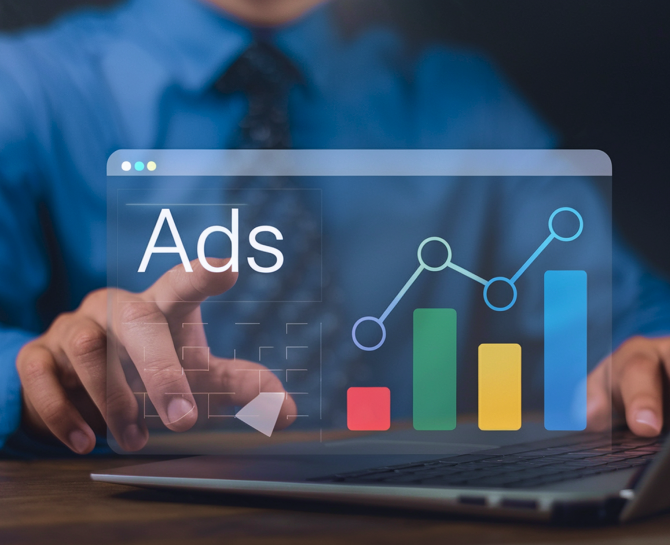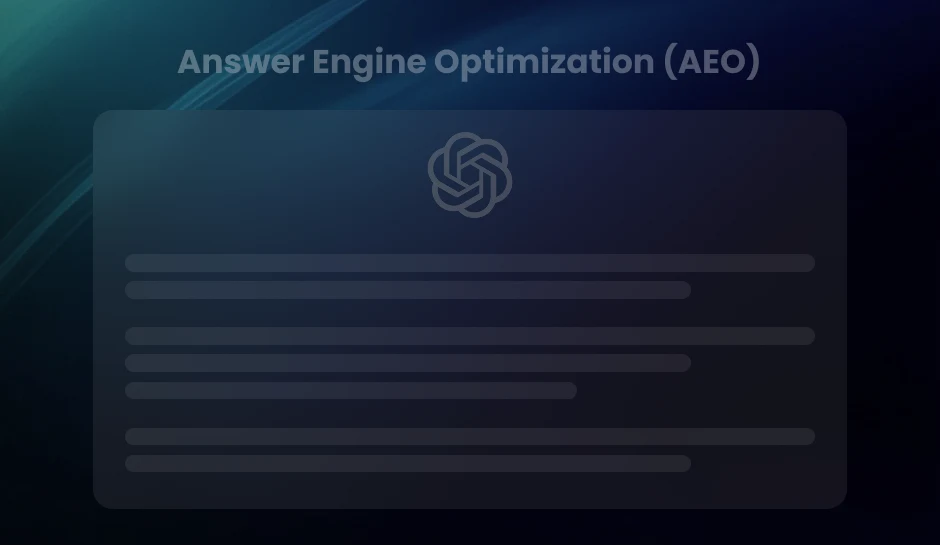
What You Need to Know About the Linear Attribution Model in Google Ads
Struggling to measure your full marketing funnel? The Linear Attribution Model in Google Ads assigns equal credit to every ad interaction—giving you a clearer picture of how campaigns work together to drive conversions. Find out when to use it, how to implement it, and how it compares to other models.
Measuring marketing performance depends on understanding what drives conversions and how credit should be assigned across multiple customer touchpoints. This is where attribution models come into play. These models influence budget allocation, campaign optimization, and long-term strategy by defining how credit is distributed.
Over the past decade, attribution modeling has shifted from oversimplified “last click” reporting toward more nuanced, data-driven frameworks. Platforms like Google Ads now offer multiple models that reflect the complexity of modern customer journeys. Among them, the linear attribution model takes a balanced approach, evenly distributing credit across all interactions leading up to a conversion. But how well does that align with your marketing goals? And in what situations does linear attribution yield more insightful performance data?
A Closer Look at the Linear Attribution Model
Definition of Linear Attribution and Its Application in Google Ads
Linear attribution is a model that assigns equal credit to every touchpoint in the conversion path. When applied in Google Ads, this approach gives consistent weight to each user interaction with your ads before converting, rather than favoring the first or last click. Within Google Ads, linear attribution is available for Search and Shopping campaigns. Once selected, the model distributes conversion value uniformly across all campaign elements that contributed to conversion clicks, keywords, and devices regardless of the order in which they occurred. Advertisers use this model to evaluate the full customer journey. Every step, initial ad engagement or a later remarketing click, is equally recognized for moving users toward conversion.
How Linear Attribution Distributes Credit Across Customer Touchpoints
Instead of attributing most or all of the conversion credit to just one point in the funnel, the linear model spreads it evenly. For example, if a user clicks on four ads before converting, each ad interaction receives 25% of the conversion value.
- Multi-channel interaction:
- Granular keyword visibility:
- Bid strategy support:
The model still assigns uniform credit across eligible Google Ads clicks if the customer journey includes touchpoints on different networks- such as Display, Search, and Shopping.
By treating each click equally, linear attribution reveals mid-funnel keywords that may not get credit in last-click models but still influence decision-making.
Google’s Smart Bidding algorithms incorporate attribution data when optimizing for conversions or conversion value. Linear attribution feeds more balanced data into these systems.
The model functions based on the user’s conversion path recorded within the attribution window, which can be customized in Google Ads. This window determines which interactions are eligible for credit-commonly set between 30 and 90 days.
Linear attribution reduces overemphasis on the last interaction and highlights the collective power of repeated engagement. For brands running complex, multi-touch funnel strategies, this makes performance measurement more representative of actual customer behavior.
Pro Tip- When using linear attribution in Google Ads, combine it with custom attribution windows tailored to your average sales cycle. If your customers typically convert within 60 days, set your attribution window accordingly to ensure every meaningful touchpoint is captured and credited, maximizing the accuracy of your performance data and bid strategy insights.
Setting the Stage: Preparing Your Google Ads for Linear Attribution
Ensuring Accurate Conversion Tracking in Google Ads
Linear attribution distributes equal credit across each touchpoint in a user’s path to conversion. For this model to function effectively in Google Ads, conversion tracking must operate with absolute precision. Every click, impression, and interaction must be captured without gaps or inconsistencies.
Start by reviewing all active conversion actions in your Google Ads account. Navigate to Tools & Settings > Measurement > Conversions. Check each conversion type submission, purchase, and phone call the following:
- Global site tag (gtag.js) or Google Tag Manager is properly deployed on every relevant page.
- Conversion IDs and labels match exactly as defined within Google Ads.
- No delays or errors are occurring in the firing sequence of tags.
- Attribution windows align with the average customer journey length.
Although automated tools offer validation, manual testing reveals more. Trigger each conversion yourself, start to finish. Use Chrome’s Tag Assistant or Google’s Debug Mode to monitor tag behavior. Inconsistent or duplicated conversions distort linear model weightings, so every anomaly skews attribution data.
Integrating Tools for Attribution Modeling in Google Ads
Google Ads alone doesn’t always provide the full visibility required for attribution modeling. Integrate supporting tools to build a comprehensive, linear-based attribution framework.
- Google Analytics 4 (GA4):
- Google Tag Manager (GTM):
- Data-driven connectors:
Seamlessly link your GA4 property with your Google Ads account to unify cross-channel tracking. This allows shared conversion data and real-time analysis of touchpoints from both paid and organic sources.
Use GTM to centralize tag management. GTM simplifies the deployment of tracking scripts, standardizes trigger conditions, and ensures tags fire at the correct time across multi-step funnels.
For organizations using CRM software or eCommerce platforms (like Salesforce or Shopify), build custom connectors via Google Ads API or third-party data pipelines to surface offline and secondary conversions.
Monitor the Paths and Assisted Conversions tabs inside the Attribution section of the Google Ads interface. These reveal whether step-by-step campaign interactions are being recorded, providing critical input for linear models. If interactions appear fragmented or missing, recheck integration points.
When these systems operate in sync, linear attribution in Google Ads assigns influence with precision, and campaign decisions become grounded in the full customer journey, just the final click.
Step-by-Step Guide to Selecting Linear Attribution in Google Ads
- Step 1 –
- Step 2 –
- Step 3 –
- Step 4 –
- Step 5 –
Sign in to Google Ads: Use an account with admin access. Only accounts with edit-level permissions can make changes to attribution models.
Navigate to Conversions: In the top menu, click Tools & Settings, then select Conversions under Measurement.
Edit a Conversion Action: Locate the specific conversion action you want to update. Click its name, then choose Edit settings.
Choose Attribution Model: Scroll down to Attribution model. From the dropdown, select Linear.
Save: Click Save and Continue, then Done. Changes take effect moving forward; past data remains tied to the previous attribution model.
The Advantages of Linear Attribution for Client Campaigns
Providing a Holistic View of the Customer Journey Mapping
Linear attribution in Google Ads gives equal credit to every touchpoint that leads to a conversion. This uniform distribution of credit reveals a customer’s full pathway before completing a goal. This model doesn’t just show where users convert for client campaigns- it lays out how they got there.
Instead of spotlighting only the beginning or the end of the funnel, linear attribution illuminates every interaction: the first click on a display ad, a mid-funnel interaction with a branded search, and the final engagement through retargeting all receive measurable value. This comprehensive mapping allows marketers to evaluate the effectiveness of each stage in real-time.
- Cross-funnel synergy becomes measurable:
- Data-driven storytelling:
- Unbiased insights into campaign structure:
You can assess how top-of-funnel awareness efforts contribute to bottom-of-funnel conversions.
This model delivers a narrative of the customer journey that aligns with audience behavior across devices and platforms.
Since the model treats each interaction evenly, it removes guesswork and over-crediting from single-click points.
Supporting Cross-Channel Marketing Strategies with a Balanced Approach
Client campaigns increasingly operate across multiple platforms like YouTube, Search, Display, Discovery, and third-party channels. A linear attribution model complements this environment by assigning consistent value to every user interaction, regardless of channel delivery.
This balance allows campaign managers to understand the composite effect of each platform. Does YouTube spark an early interest that is later captured by brand search? Does a Google Display Network banner keep the brand at the top of your mind until a direct visit occurs? Linear attribution connects the dots without bias.
- Equal recognition for diverse channels:
- Improved media mix modeling:
- Better-informed creative decisions:
Display, video, and search assets are evaluated on the same foundation, ensuring budget planning isn’t skewed by last-click prioritization.
Because every touchpoint is considered, performance data supports more accurate ad spend distribution across channels.
Creative teams benefit from knowing which combinations of formats are consistently contributing across the funnel.
When used for client campaigns, the linear model becomes a framework for alignment. It fosters collaboration between acquisition and retention teams, content creators and media buyers, and brand and performance goals. No touchpoint is ignored, and no interaction loses visibility.
Pro Tip- Integrate Google Ads’ linear attribution insights with your CRM or analytics platform to build a unified view of the customer journey across paid and owned touchpoints.
How Linear Attribution Stacks Up Against Other Attribution Models
Last Click vs. Linear: Who Gets the Credit?
Last click attribution, the default model in many analytics tools, assigns 100% of the conversion credit to the final interaction. Linear attribution distributes the credit equally across all touchpoints leading up to a conversion. This fundamental difference changes how advertisers interpret performance across customer journeys.
Here’s what this looks like in practical terms:
- Last Click:
- Linear:
If a customer clicks on four different ads before converting, only the last one receives recognition for the sale. This skews data toward bottom-of-funnel activities like branded search campaigns, even if earlier interactions did the heavy lifting to build awareness or drive interest.
Each interaction would receive 25% of the credit, given due weight to upper-and mid-funnel touchpoints such as display ads, YouTube campaigns, or generic keyword searches.
Linear attribution gives a broader view of impact across the funnel. It highlights campaigns that support user engagement earlier in the journey-something last-click models systematically undervalue. For brand-oriented strategies or products requiring longer consideration windows, linear attribution exposes value where the last click remains silent.
From Single-Touch to Multi-Touch: A Paradigm Shift
Single-touch attribution models, whether first-click or last-click, oversimplify the path to purchase. Imagine a user researching products across emails, social ads, search ads, and remarketing campaigns before converting. First- or last-click models erase the complexity of this journey, focusing on only one engagement point.
Linear attribution introduces multi-touch measurement, documenting the entire set of influences that lead to conversion. Tying performance to each interaction reduces data blind spots and redefines campaign success.
This shift matters for budgeting too. With linear attribution, marketers can confidently allocate spend to early-stage tactics like top-of-funnel video campaigns, knowing their contribution will be recorded accurately. In contrast, single-touch models encourage overinvestment in last-stage activities because that’s where the measurable conversions appear to occur.
Which model to choose depends on strategic intent. When top-of-funnel influence is critical, linear attribution provides the clearest view. When immediate conversion drivers are the focus, last-click may suffice. That said, multi-touch attribution-including linear-continues to gain traction in performance-driven Google Ads strategies for one reason: it aligns measurement with how conversions happen.
Pro Tip- Use Google Ads’ “Model Comparison” tool to simulate how different attribution models impact your conversions. This lets you see how switching from last-click to linear would redistribute credit across campaigns, helping you make data-backed decisions before committing to a change.
Advanced Techniques: Google Ads Campaign Optimization with Linear Attribution
Adapting Your Bids and Budgets Based on Linear Attribution Data
Linear attribution assigns equal credit to every touchpoint along the user journey, enabling advertisers to assess which keywords, campaigns, and creatives consistently assist in conversions. This evenly distributed view reshapes how budget and bidding are approached. Instead of funneling investments into campaigns that generate only the last click, analysis of linear attribution data identifies touchpoints that play substantial support roles, such as initial ad clicks or middle-funnel remarketing interactions. These insights make it possible to reallocate spend toward keywords with high assist value.
- Bid adjustments:
- Budget reallocation:
- Device and geo optimization:
Increase bids on mid-funnel search queries or audiences frequently contributing to converting paths. Use assisted conversion metrics from the ‘Attribution’ tab in Google Ads to identify them.
Lower investment in a single-click, low-assist campaigns and shift that budget into evergreen campaigns that repeatedly contribute to multi-step conversions.
Analyze device-level and location-level data over the full conversion path. If mobile assists heavily but rarely closes, increasing mobile bids can drive more total conversions after accounting for later desktop closings.
Optimization under the linear model doesn’t rely on spikes but on patterns—the volume of assisted engagements that lead to eventual conversions. This method fuels consistent campaign momentum instead of reactive budget swings.
Continuous Optimization: From Ad Creation to Conversion Analysis
Linear attribution enhances feedback loops at every point of the campaign lifecycle, informing the bidding strategy, creative development, audience segmentation, and post-click performance.
Start with search terms and audience insights. Keywords or affinity segments that appear early and often in journeys signal value beyond the surface. Use this information to build ad creatives that speak to earlier motivations, not only last-minute decision drivers.
- Ad copy iteration:
- Landing page refinements:
- Custom segmentation:
Build messaging around high-assist touchpoints. For example, if users often click on solution-oriented queries before converting to branded terms, make those pain points central to the initial ads.
Structure landing pages to reinforce the value propositions discovered in linear path analysis. Design content that speaks to each key point along the journey, not just the final ask.
Break out campaigns by proven linear contributors-remarketing to users who initially clicked on informational search ads or looked at specific product categories but didn’t convert.
After conversion, the linear model continues to provide insight. Use Path Metrics reports to analyze the average journey length and common ad sequences. When most paths share five or more interactions, campaign frequency capping and impression timing can be restructured to match those user rhythms.
Looking for more than top performers surfaces previously overlooked assets. Linear attribution surfaces the cumulative impact of each piece-headline, audience, placement, keyword-that contributed. That visibility transforms what gets scaled, what gets paused, and what gets tested next.
Pro Tip- Use Google Ads’ “Top Paths” and “Path Metrics” reports to uncover recurring sequences in user journeys, and then align your ad messaging and sequencing to match.
The Future of Attribution Models and Their Role in Google Ads
The Rise of Data-Driven Decision-Making in Marketing Analytics
Attribution modeling in Google Ads no longer revolves around guessing which touchpoint deserves credit. The ecosystem has shifted toward measurable accountability and tangible performance outcomes. According to a 2022 Deloitte Digital report, over 64% of CMOs actively integrate data-driven attribution models into their strategic planning, using real-time insights to inform budget allocations and audience targeting.
Once favored for its equal weight distribution across touchpoints, Linear attribution now operates in a climate where precision and context carry more weight. Marketing teams seek granular analysis over general models. Google Ads has mirrored this shift. The 2023 update to Google Ads’ attribution section introduced clearer breakdowns for path previews and more robust data segmentation – a direct consequence of pressure for evidence-based performance analytics.
Expect the relevance of traditional models like linear to decline in static use. However, their conceptual foundation continues to influence hybrid models as marketers evolve their strategies in response to increasingly complex consumer journeys.
Prospects of AI and Machine Learning in Attribution Modeling and Optimization
Artificial intelligence doesn’t just shift the needle-it rewrites the rules. Google’s push toward machine learning-driven attribution models, particularly Data-Driven Attribution (DDA), shows where priorities lie. DDA uses conversion data across thousands of user journeys to assign credit based on what drives outcomes, not just sequence or timing.
Machines outperform humans in recognizing non-linear, multichannel interactions. In Q1 2024, internal benchmarks from Google Ads reported a 6% higher conversion rate for campaigns using DDA over last-click attribution- the direct result of algorithmic credit assignment based on statistical modeling.
- Pattern recognition:
- Real-time adaptability:
- Cross-channel modeling:
ML uses rule-based models to identify subtle behavioral triggers and micro-conversions previously invisible to marketers.
As campaigns unfold, ML-based models adapt attribution dynamically, adjusting spend and targeting with surgical precision.
AI attribution is channel-agnostic. It tracks influence from YouTube views, search ads, display impressions, and beyond.
If insights depend on clean, structured data, marketers’ role turns toward data stewardship. Google Ads facilitates this with integrations like Enhanced Conversions, linked GA4 properties, and audience signals. When optimized, these inputs become the fuel for advanced attribution logic.
Linear attribution models won’t disappear, but their function is changing. They serve now as baselines or educational tools rather than strategic drivers. The next generation of campaign measurement won’t ask who clicked and when but what inspired action. Machine learning will answer with speed and nuance humans can’t replicate.
Pro Tip- To future-proof your campaigns, start using Data-Driven Attribution (DDA) alongside Enhanced Conversions and GA4 audience signals. This trio gives Google Ads’ machine learning models the high-quality data they need to deliver smarter, more accurate attribution, helping you shift from reactive to proactive optimization.
Reframe the Way You Measure Success in Google Ads
Attribution modeling shapes how conversions get credited across user touchpoints, and in Google Ads, that framing directly impacts bidding strategies, budget allocation, and, ultimately, revenue outcomes. When attribution skews toward the first or last click, it blurs the true influence of mid-funnel tactics that actively nurture conversions. Linear attribution restores visibility to every step of the customer journey by assigning equal value to each touchpoint.
Consider what happens when evaluating campaigns without accounting for sequence and interaction depth. Budget gravitates toward channels that close, not those that build, assist, or educate. That limitation restricts performance and reduces clarity. A balanced approach, grounded in understanding user behavior and intent, adds precision. The linear model offers that, especially when paired with robust analysis inside Google Ads.
For marketers seeking a fuller view of influence across multiple entry points and devices, linear attribution presents a foundational alternative to default biases. Google Ads supports it natively, making real-time implementation frictionless without needing back-end customization or third-party platforms.
Curious about how a simple shift in attribution logic changes the data narrative? Start by testing linear attribution on one campaign. Watch how new patterns emerge. Pay attention to how assisted clicks factor into decision-making. Small experiments drive big insights.
Key Takeaways
- Linear attribution evenly distributes credit across all touchpoints, revealing the true influence of each stage in the customer journey—from initial awareness to final conversion.
- By highlighting mid-funnel and assistive interactions, marketers can adjust bids and reallocate the budget toward keywords and campaigns that support conversions over time—not just those that close them.
- Accurate linear attribution depends on precise conversion tracking. To avoid data gaps and skewed attribution reporting, it is essential to ensure that GTM, GA4, and Google Ads are seamlessly integrated.
- While linear attribution is valuable for balanced insights, it also lays the groundwork for transitioning to AI-powered models like Data-Driven Attribution, which use machine learning to assign credit based on real outcomes.
Need guidance beyond the basics?
Get in touch with us at info@diggrowth.com to refine your linear attribution model and Google ads strategy further.
Ready to get started?
Increase your marketing ROI by 30% with custom dashboards & reports that present a clear picture of marketing effectiveness
Start Free Trial
Experience Premium Marketing Analytics At Budget-Friendly Pricing.

Learn how you can accurately measure return on marketing investment.
Additional Resources
Don’t Let AI Break Your Brand: What Every CMO Should Know
AI isn’t just another marketing tool. It’s changing...
Read full post postFrom Demos to Deployment: Why MCP Is the Foundation of Agentic AI
A quiet revolution is unfolding in AI. And...
Read full post postAnswer Engine Optimization (AEO): The New Frontier of SEO in 2025
As digital experiences continue to evolve, so does...
Read full post postFAQ's
The Linear Attribution Model gives every user's Google Ads interaction equal credit before converting. Whether it's the first click, a middle-funnel ad, or the final interaction, each touchpoint receives an equal share of the conversion value. This helps marketers understand users' full path to conversion, not just the last or first click.
Use the linear attribution model when your marketing strategy includes multiple touchpoints that work together to influence conversions. It’s ideal for campaigns where brand awareness, remarketing, and mid-funnel engagement play a significant role and you want to measure the cumulative impact of those efforts.
No, switching to linear attribution does not retroactively update historical conversion data. Once you change the attribution model for a conversion action, it only affects future conversions. Historical performance will remain attributed based on the previous model.
Linear attribution provides more balanced conversion data to Smart Bidding algorithms, which can improve bid optimization across the full funnel. It ensures that campaigns contributing earlier in the journey—like awareness or mid-funnel campaigns—are recognized, leading to more informed and efficient bidding decisions.
Yes! Google Ads offers an Attribution Model Comparison Tool under Tools & Settings > Attribution. You can compare Linear Attribution with Last Click, First Click, Time Decay, Position-Based, and Data-Driven models to evaluate how credit is distributed across touchpoints and how that changes your campaign performance insights.
 Shahzad Mussawir
Shahzad Mussawir  Rahul Sachdeva
Rahul Sachdeva 

